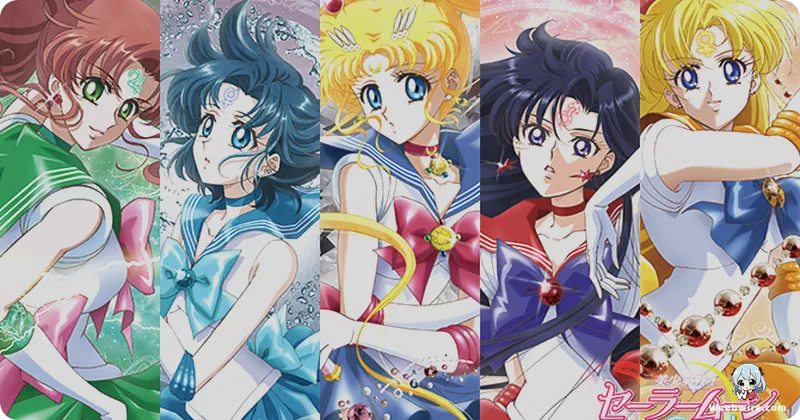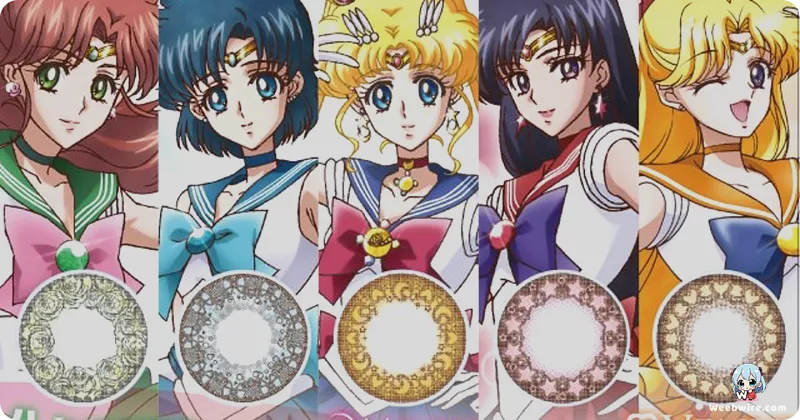Beyond the Moonlight: Exploring the Secret History and Progressive Heart of Sailor Moon

Sailor Moon, a foundational series within the magical girl genre, has captivated audiences globally since its debut in the early 1990s. While widely recognized for its iconic transformations, strong friendships, and battles against evil, the franchise also contains a variety of lesser-known details. These insights, ranging from the creator's personal inspirations to significant advancements in character representation, highlight the enduring appeal and depth of this beloved series.
Naoko Takeuchi's Vision and Inspirations
At the core of Sailor Moon's creation is its brilliant mind, Naoko Takeuchi. Before Usagi Tsukino's adventures began, Takeuchi was an aspiring mangaka with interests in astronomy, geology, and high fashion. These diverse passions were carefully integrated into the series. For example, the Inner Sailor Senshi's names, Mercury, Mars, Jupiter, and Venus, are direct celestial references, with their powers often linked to the mythological associations of these planets. The array of gemstones, present in magical artifacts and character accessories, also stems from Takeuchi’s fascination with precious stones. Her initial concept, a one-shot manga titled 'Codename: Sailor V' featuring Minako Aino as a solo magical warrior, evolved significantly. The success of this precursor led her editor to suggest a team dynamic, resulting in the powerful ensemble of Sailor Senshi known today. This evolution from a single heroine to a collective force demonstrates Takeuchi’s expansive vision.
The Significance of Usagi Tsukino's Name
Further enriching the narrative is the etymology of its protagonist, Usagi Tsukino. Her first name, 'Usagi,' translates to 'rabbit,' while 'Tsukino' means 'of the moon.' This cleverly references the Japanese folklore of the 'moon rabbit' (Tsuki no Usagi), a tale of a rabbit pounding mochi on the lunar surface. This cultural reference adds a layer of depth to her character, subtly connecting her destiny to the celestial body she is sworn to protect. Such thoughtful naming conventions are present throughout the series, offering subtle clues and enhancing the experience for attentive fans.
Groundbreaking Representation: Sailor Uranus and Neptune
One of Sailor Moon’s most revolutionary contributions, particularly for its time, was the portrayal of Sailor Uranus (Haruka Tenoh) and Sailor Neptune (Michiru Kaioh). Their bond went beyond conventional platonic friendship, depicting an openly affectionate and deeply committed same-sex couple. In a media landscape where LGBTQ+ representation, especially in children's programming, was largely absent, Haruka and Michiru's relationship was groundbreaking. Although various international dubs attempted to obscure or reinterpret their connection as mere cousins or close friends, the original Japanese version was unambiguous. Their mature, unwavering devotion, intertwined with their duties as Sailor Senshi, provided a powerful and positive affirmation of queer love, significantly impacting many fans and setting a precedent for more diverse representation in anime. This remains a pivotal aspect of Sailor Moon's lasting legacy, showcasing its remarkably progressive storytelling.

The Pragmatic Origins of Transformation Sequences
The iconic transformation sequences, a signature element of the magical girl genre, also have interesting origins. While visually spectacular and accompanied by memorable musical themes, they initially served a practical purpose in early animation. By reusing these elaborate sequences, studios like Toei Animation could significantly reduce animation costs and production time, allowing resources to be allocated to other critical aspects of each episode. Over the series’ extensive run, these sequences evolved, becoming increasingly intricate and reflecting the Senshi's growth and power upgrades. Today, they are an indelible part of anime history, inspiring countless homages and imitations.
Tuxedo Mask's Evolving Role
Tuxedo Mask, known as Mamoru Chiba, also underwent a notable character arc. Initially conceived as a mysterious ally offering sporadic advice and a signature rose, his role expanded dramatically as the series progressed. He evolved beyond a mere love interest to become an essential member of the team, frequently providing crucial emotional support and, at times, direct assistance in battle. His journey from an enigmatic figure to a fully developed character, complete with his own struggles and strengths, highlights the series' commitment to a well-rounded cast.
Global Reach and Localization
Sailor Moon’s global impact presents another compelling narrative. When the anime first reached Western audiences, it underwent significant localization, extending beyond just Haruka and Michiru's relationship. Character names were often changed (e.g., Usagi became Serena), plot points were altered, and entire episodes or scenes were sometimes removed to conform to cultural norms or broadcasting standards of the time. While these modifications often caused controversy among purist fans, they were instrumental in introducing the series to a wider global audience, solidifying its place in international pop culture. The diverse adaptations, from the original manga to the 90s anime, the live-action series, and the more recent 'Sailor Moon Crystal,' each offer unique interpretations of the story and characters, providing fans with varied avenues to experience the enduring magic.
Sailor Moon’s sustained popularity is a testament not only to its compelling narrative and memorable characters but also to these intricate details and progressive elements that continue to resonate with new generations. It stands as a powerful symbol of friendship, courage, and the belief that ordinary girls can wield extraordinary power, irrevocably shaping the landscape of anime and pop culture for decades to come.
Credits
Sailor Moon
Author
Naoko Takeuchi
Cover Art
Naoko Takeuchi
Studio
Toei Animation
Publisher
Kodansha
Producers





